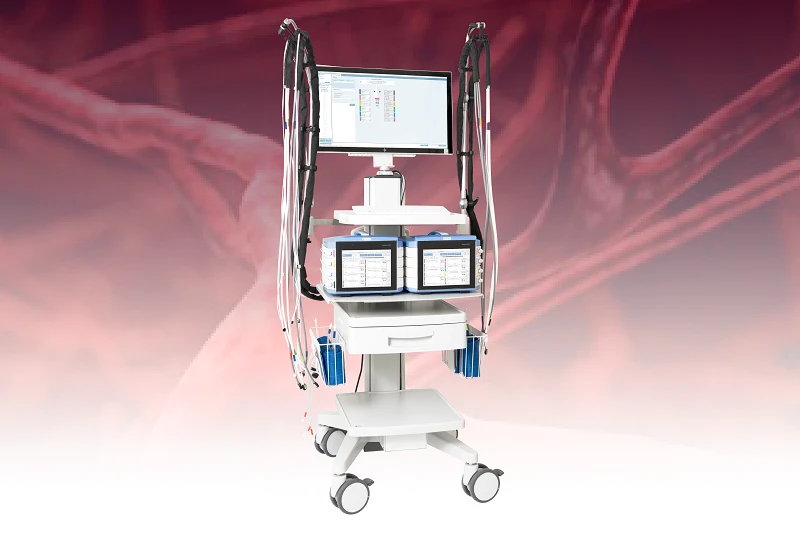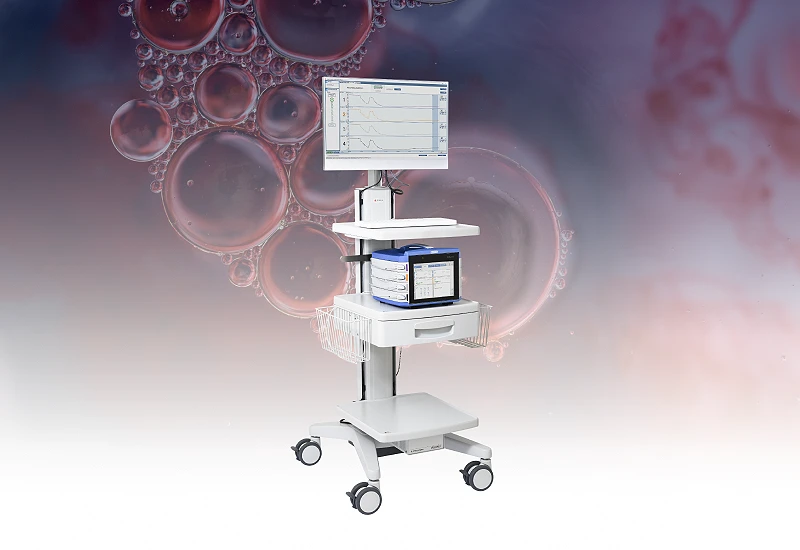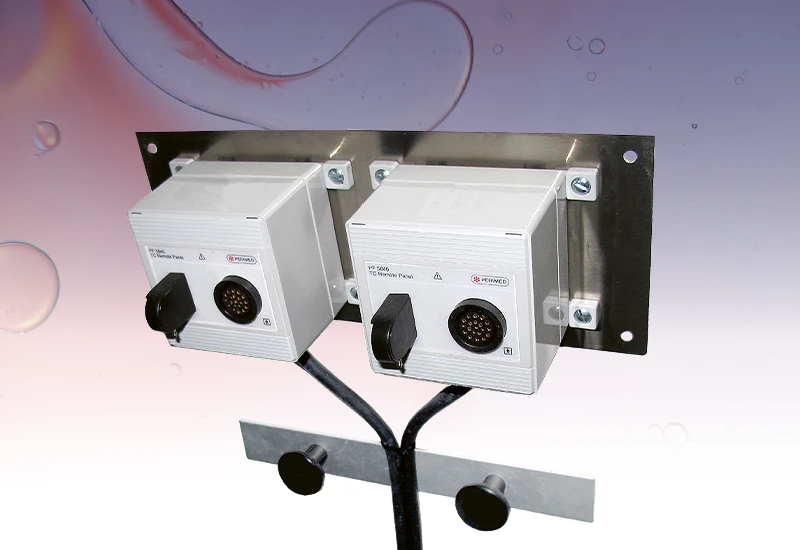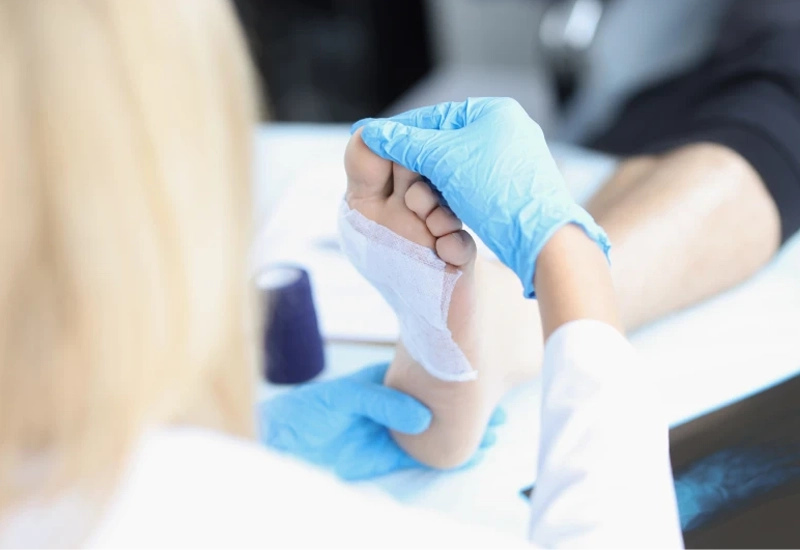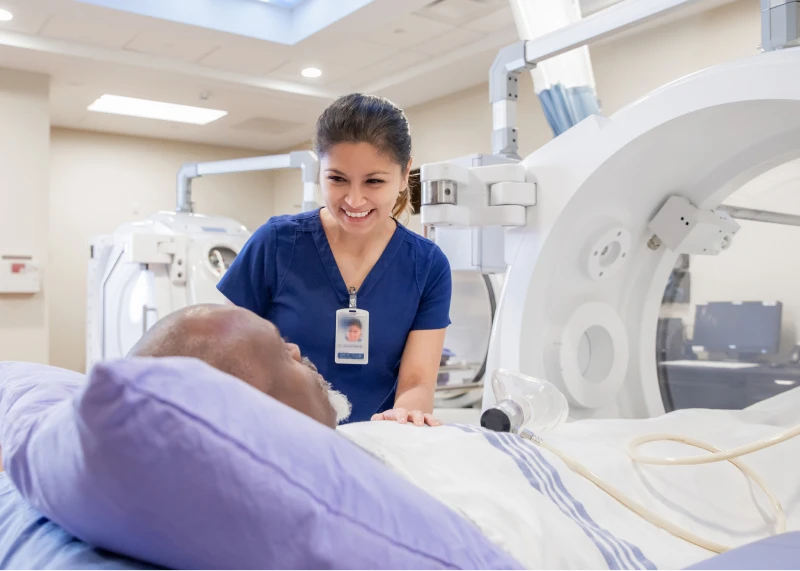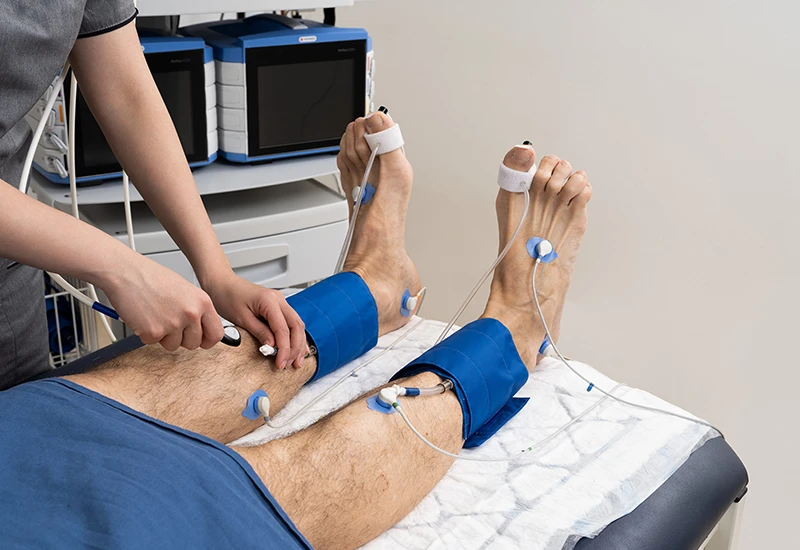Transcutaneous oxygen — TcpO2
TcpO2 is a noninvasive method that leverages Clark-type electrodes to measure microcirculation by measuring the local pressure of oxygen released through the skin from the capillaries. The primary applications of TcpO2 are in the assessment of vascular diseases like peripheral artery disease (PAD), wound-healing potential, the effectiveness of revascularization surgery and hyperbaric oxygen therapy (HBOT). TcpO2 is a viable alternative to toe pressure for people with amputated toes and ankle pressure for patients with noncompressible ankles.
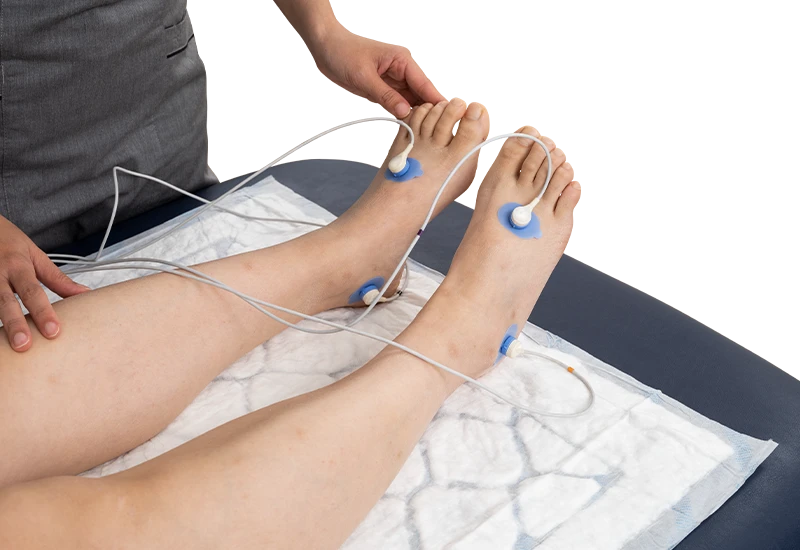
TcpO2 with PeriFlux 6000
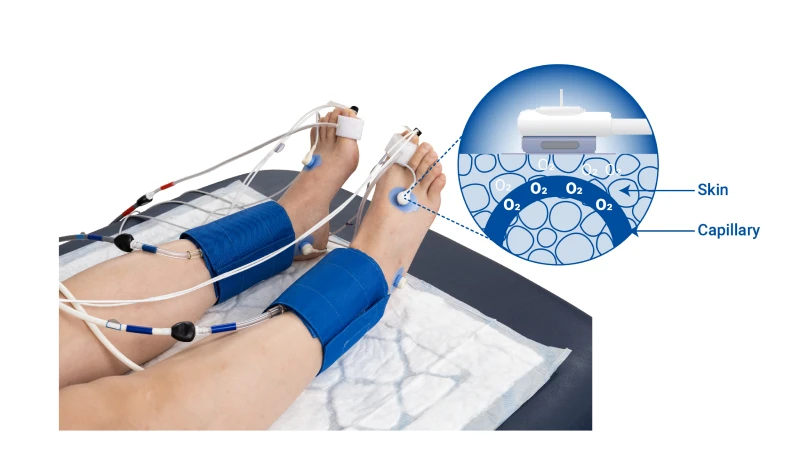
TcpO2 can be measured simultaneously with ankle and toe pressure using PeriFlux 6000 Combined — helping to optimize patient management.
TcpO2 is made possible through Clark-type electrodes that can accurately measure the pressure of
oxygen released through the skin. A self-adhesive fixation ring holds the electrode in place throughout measurement. The ring provides an airtight seal, and a few drops of contact liquid ensure a good connection between the electrode and the skin. The electrodes heat the skin to increase blood flow at the site. Typically, it takes about 15 minutes for the body to reach a stable maximum level of oxygen diffusion — producing a reliable TcpO2 baseline measurement in millimeters of mercury (mmHg).
One study [1] suggests that angiosome-guided TcpO2 contributes to a prognosis of successful foot ulcer healing. Comparing TcpO2 measurements in areas adjacent to a non-healing ulcer, for example, with measurements from additional sites can reveal microcirculatory deficiencies.
Interpreting TcpO2 levels
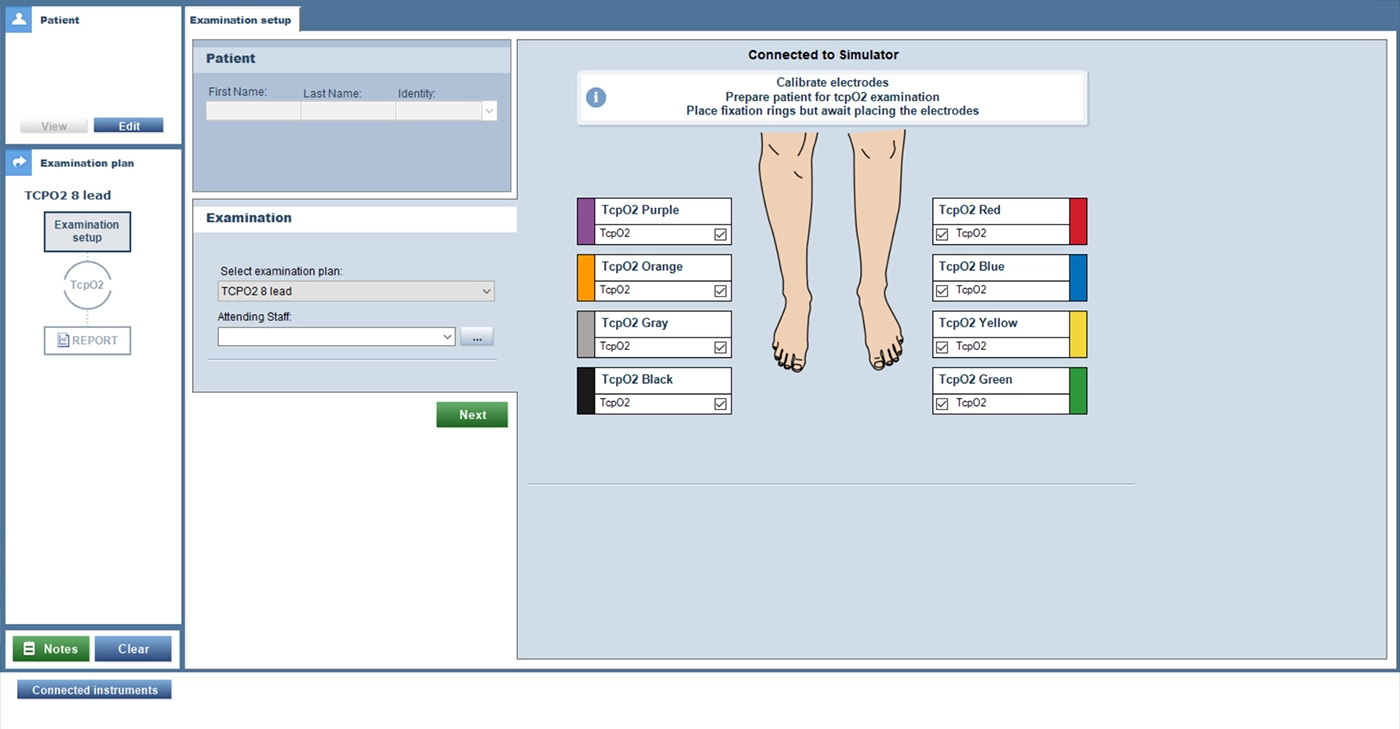
According to the Global Vascular Guidelines [2], wound complications increase as TcpO2 levels fall below 40 mmHg.
It’s possible to measure TcpO2 while a person is undergoing hyperbaric oxygen therapy (HBOT), which is a useful way of determining the effectiveness of this treatment.
If the in-chamber TcpO2 value of a person with diabetic foot is greater than 200 mmHg, the patient will likely benefit, but if it’s less than 100 mmHg, HBOT is considered ineffective [3].
People with critical limb ischemia will almost always produce TcpO2 values below 30 mmHg and usually less than 20 mmHg [3]. Edema, inflammation, or temporarily constricted blood vessels due to cold, dehydration, or pain can, however, result in low TcpO2 values. Interpretation of TcpO2 values should be made in the context of the patient’s clinical history and condition at the time of testing.
Microvascular disease can also result in low TcpO2 values, as seen in patients with diabetes. Isolated low values in tissue at the edge of a wound (with normal distal values) can be caused by local constriction, inability to form new blood vessels, or some other process confined to the wound [3].
Provocations and challenges
In addition to the baseline, TcpO2 with provocation provides more information about microcirculation status. Commonly used techniques include oxygen challenge tests and leg elevation/lowering.
Oxygen challenge
In an oxygen challenge, the patient breathes 100% oxygen. According to Fife et al. [3], an oxygen challenge is the best way to determine whether low baseline TcpO2 values (under 30 mmHg) are due to macrovascular arterial disease, or a temporary diffusion barrier — such as edema or inflammation. Patients with a baseline TcpO2 below 30 mmHg and above 100 mmHg on 100% oxygen are likely to have adequate arterial inflow but a local barrier to oxygen diffusion. Values for TcpO2 with 100% oxygen below 30 mmHg are consistent with severe artery disease [3].

Leg elevation
Leg elevations can be useful to assess the wound healing potential of patients with borderline TcpO2 values (20-40 mmHg) [4]. The patient’s leg is raised to a 30° angle (by placing a wedge-shaped support or using the bed). The study [4] showed that leg elevation can reveal the macrocirculatory capacity to overcome the “uphill” challenge. Concluding that a TcpO2 value of up to 15mmHg below the baseline is normal, whereas greater drops are indicative of arterial deficiency.
Related products and applications
Contact us
Get in touch
If you would like to know more about how to carry out TcpO2, its application, or our related products, we are here to help. Contact us and start changing outcomes.
References
- Mateo López-Moral, Marta García-Madrid, Raúl J. Molines-Barroso, Yolanda García-Álvarez, Aroa Tardáguila-García, José Luis Lázaro-Martínez, Analyses of transcutaneous oxygen pressure values stratified for foot angiosomes to predict diabetic foot ulcer healing, Journal of Tissue Viability, 2023, ISSN 0965-206X, https://doi.org/10.1016/j.jtv.2023.10.003.
- Conte MS, Bradbury AW, Kolh P, et al. Global vascular guidelines on the management of chronic limb-threatening ischemia [published correction appears in J Vasc Surg. 2019 Aug;70(2):662]. J Vasc Surg. 2019;69(6S):3S-125S.e40. doi:10.1016/j.jvs.2019.02.016 https://pubmed.ncbi.nlm.nih.gov/31159978/
- Fife CE, Smart DR, Sheffield PJ, Hopf HW, Hawkins G, Clarke D. Transcutaneous oximetry in clinical practice: consensus statements from an expert panel based on evidence. Undersea Hyperb Med. 2009;36(1):43-53. https://pubmed.ncbi.nlm.nih.gov/19341127/
- J.Michael Bacharach, Thom W. Rooke, Philip J. Osmundson, Peter Gloviczki, Predictive value of transutaneous oxygen pressure and amputation success by use of supine and elevation measurements, Journal of Vascular Surgery, Volume 15, Issue 3, 1992, Pages 558-563. https://www.jvascsurg.org/article/0741-5214(92)90196-F/fulltext
